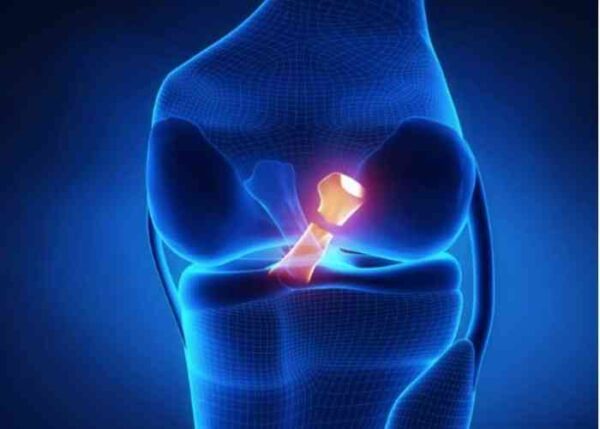ACL Tear Specialist

Are you an athlete who participates in sports that involve jumping or quick stopping? If so, you may be at risk of tearing your anterior cruciate ligament, or ACL. An ACL tear is one of the most common injuries suffered by athletes. ACL tear specialist, Dr. Matthew Provencher provides diagnosis and both surgical and nonsurgical treatment options for patients in Vail who have suffered a torn ACL. Contact Dr. Provencher’s team today!
What is the Anatomy of the ACL?
The anterior cruciate ligament (ACL) is one of the main ligaments of the knee joint and is responsible for preventing the tibia (shinbone) from sliding out in front of the femur (thighbone). An anterior cruciate ligament injury is quite common in the athletic population, especially athletes involved in sports that require sudden changes in directions and stops. Approximately 200,000 ACL injuries are reported each year in the United States. Injuries can range from a simple sprain to a complete ACL tear requiring surgical intervention from Dr. Matthew Provencher, Vail, Aspen, Colorado Springs and Denver, Colorado area orthopedic knee specialist.
The ACL runs through the knee joint from the front of the shinbone to the back of the femur. This ligament plays an important role in anatomy of the knee. It helps maintain stability and provides protection to the knee’s menisci. An anterior cruciate ligament injury typically occurs in active individuals from a direct blow to the joint or from unnatural twisting and pivoting. When the ACL is stretched past its normal range of motion, the shinbone slides out from under the thighbone, causing an ACL tear or stretch. Roughly 50 percent of ACL injuries occur in combination with an additional injury, such as damage to the meniscus, articular cartilage, or other ligaments.
What are Anterior Cruciate Ligament Injury Symptoms?
Patients often experience knee pain, swelling and limited range of motion following an anterior cruciate ligament injury. A slight sprain or stretch of the ligament may cause mild to moderate pain along with a slightly unstable sensation when the knee moves. An ACL tear may cause moderate to severe knee pain and swelling, as well as a “popping” sensation when the injury occurred.
How to Know if you Have an ACL Tear
If a patient believes they have experienced an injury to the ACL, Dr. Provencher will begin the diagnosis with a thorough physical examination of the affected joint. He will perform a variety of tests in many cases to help confirm the anterior cruciate ligament injury, such as the Pivot Shift, Anterior Drawer and Lachman tests. A series of x-rays and an MRI scan are usually performed to evaluate the soft tissues and bony structures of the knee joint in great detail. These diagnostic tests will also help Dr. Provencher determine if additional injuries to the joint are present.

What are ACL Treatment Options?
Treatment of an anterior cruciate ligament injury varies based on severity of ligament damage, as well as possible damage to other structures within the knee. The overall goal of treatment is to reduce pain and swelling and to restore stability and full function to the injured joint.
Does an ACL Tear Require Surgery?
If the injury does not cause instability and/or does not include a severe ACL tear, Dr. Provencher typically prescribes non-surgical measures. The RICE (rest, ice, compression, elevation) method is commonly utilized, along with modified activities, bracing and a detailed physical therapy program.
What is an ACL Reconstruction?
If the injury causes instability and/or if the ACL tear is too severe for non-surgical treatment, Dr. Provencher may recommend a surgical procedure to repair the joint. Dr. Provencher typically utilizes an arthroscopic ACL reconstruction to complete the repair. This procedure requires Dr. Provencher to remove fragments of the injured ACL and replace it with a graft, or another form of soft tissue. There are several graft options utilized by Dr. Provencher. He will explain the pros and cons of each graft during a patient’s first consultation.
For more resources on an anterior cruciate ligament injury, such as an ACL tear, please contact the orthopedic office of Dr. Matthew Provencher, knee specialist serving the Vail, Aspen, Colorado Springs and Denver, Colorado communities.
Learn more in this podcast where Dr. Provencher explains an ACL tear:
In this episode, Dr. Provencher looks at the anterior cruciate ligament (ACL), helps you understand its function and discusses the process and protocols once an athlete has been diagnosed with functional instability.
0:00 What is an ACL & What is an ACL Injury?
03:40 When Does Someone Need an ACL Injury?
06:30 How Common Is the “Terrible Triad”?
08:56 Short History of ACL Injuries
11:30 Different ACL Surgery Techniques
16:44 How to choose when someone can return from ACL Injury?
17:15 Why psychology is key to recovering from an ACL Injury
22:20 The risk of reinjury and The Future of ACL Injuries?
25:00 How does the average person recover from an ACL Injury?
28:00 Why you can come back stronger from an ACL Injury
33:00 Can you prevent an ACL Injury